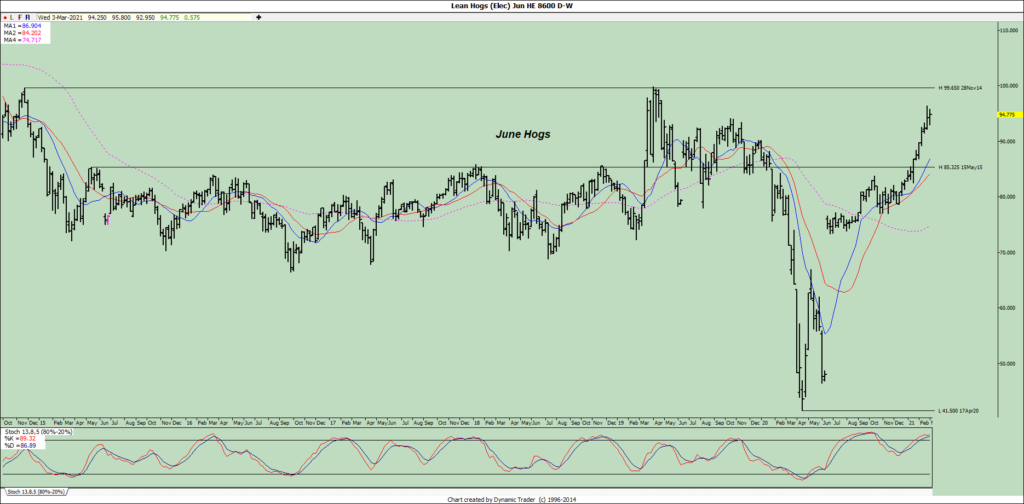Could we be suffering from a case of March Madness? No, I am not referring to the annual NCAA Men’s basketball tournament, but rather the grain and soy markets which continue to wander aimlessly, searching high and low for guidance to lead them out of this darkness and confusion. While one hates to rely on the government for that task, it does appear that the upcoming reports have the best chance at doing so. Granted, the key reports for the month will not be issued until the 31st, but lest we forget, there will be another production and supply/demand report released on the 9th, and most, if not all, of the changes, should be in the world estimates; Here are a few trade survey estimates; Brazilian bean production is expected to be upped slightly to 133.09 MMT but corn reduced (.7) to 108.29 MMT. The average estimate for Argentina beans came in at 47.41 (-.6) and corn at 47.00 (-.50). For global ending stocks, corn is expected to drop a little over 2 MMT to 284.17 MMT, beans down 670k to 82.69, and wheat up just slightly to 304.3 MMT.
Another rather dismal week for export sales, and this time corn receives the honor of being the best of the worst. We set a marketing-year low for the week ending February 25th with a net of just 115,900 MT of corn, or 4.6 million bushels. Of course, it did not help that there were cancellations in the unknown destinations category of 1,764,900 MT. Had it not been for that, sales would have looked rather stout as China purchased 1.05 MMT. There were also sales of a meager 38.8k MT for new crop. Soybeans sales were better than last week but still not overly impressive at 334,000 MT or 12.3 million bushels. Mexico was the best buyer with 139.7k MT, followed by Germany in for 137.7k and Japan taking 121.8k. For the 21/22 crop year, we sold 199.4k MT, which was almost all to China. Wheat sales rebounded 31% from last week, but keep in mind, that was a marketing-year low. Total sales came in at 219,200 MT or 8 million bushels. Of course, you may be thinking buyers are now looking at new crop, but sales for the 21/22 year were only 23.5k MT. Mexico was the top buyer with 69.3k MT, followed by China, taking 65.9k, and then Nigeria, with 56k. I would also point out that there were zero barley sales last week, and sorghum sales showed a net reduction of 52.2k MT. There was one bright spot in the report, and that was in the livestock sector. We sold 22.6k MT of beef during the week and 59.6k MT of pork, which was 68% above the 4-week average. China stepped in for 28,000 MT.
The fact that China continues to be a consistent buyer of pork would appear to suggest that the ASF issues are far from resolved. The government officially acknowledged confirmed cases this week, pointing out that they were found in hogs that were being illegally transported. It would seem that the hog markets here have been reflecting these issues for weeks now as we have extended up to levels not traded since the previous ASF debacle. Please take note that in the past week, June futures moved to within 4-cents of the peak set in early 2019, which itself was at the same level that the June contract peaked at in 2014. While we have yet to show any conclusive signs that the move has exhausted, indicators are quite overbought, so I believe producers need to pay close attention and look at possible ways to lock in these types of values.
